Introduction
Good singing has always
interested many lovers of classical
music and today the world of opera and
song can boast a plethora of excellent
voices. But whenever connoisseurs meet,
and very often in reviews, there are
references to singers from the past,
from "the golden age" or whatever
soubriquet is attached to their names.
We believe that there must be many listeners
and readers of reviews who must feel
a bit disorientated when stumbling across
names like Jenny Lind, Caruso, Melba,
Lehmann, Gigli, Chaliapin, Schlusnus,
Supervia to mention a few, maybe even
singers from a not so distant past:
Callas, Tebaldi, Nilsson, Björling,
Bergonzi, Gobbi, Siepi … Names, names,
names, but what do they stand for? Why
were they so important? Where shall
I start if I want to get to know the
cream of "the old uns"? To
fill this need we have decided to start
a series of articles about great singers
from the past, with thumbnail portraits
of a select group and some references
to others of the same period and voice-type
for those who feel ready to explore
further. We are also going to suggest
CDs to start with, as far as possible
in the lower price-bracket. Luckily
there is plenty to choose from.
Singing and Recording
The human voice was
probably the first known musical instrument.
When we go back in the history of music,
vocal music dominates from early Gregorian
chant more than 1000 years ago all through
the Middle Ages. It is not until the
Baroque era, which starts around 1600,
that instruments become equal in importance.
This is also the start of a new genre,
opera. This was soon to become very
popular and in the 18th century
opera singers were idols, like today’s
pop-stars. Names like Senesino and Farinelli
are still known and talked about but
we do not know what they sounded like
since there was no way of preserving
their voices for posterity. That also
goes for the next century, the 19th,
which is regarded as the highpoint of
opera. Most of the works regularly performed
today were written during those one
hundred years. But sound reproduction
was still not possible, even though
Edison experimented with phonographs
in the 1870s, which means that the legendary
stars of that era are also missing in
the record catalogues. Of the names
mentioned above Jenny Lind, "The
Swedish Nightingale" was never
recorded, but some singers of roughly
her generation had longer careers which
stretched into the 20th century.
It is around the turn of the last century
that techniques advanced to a degree
that it was commercially viable to make
recordings. It is generally accepted
that Enrico Caruso’s first recordings
in 1902 triggered the whole recording
industry. But during the first 25 years
or so the technique was still primitive.
The singer sang into a big horn which
was connected to a needle that made
a track in a disc made of wax or some
other plastic material, from which was
made a matrix and from which in its
turn finished shellac records could
be pressed. The frequency range was
narrow, as were the dynamics, which
affected first and foremost the instruments.
Not until 1925 was a new method introduced
when an electro-dynamic microphone was
used which widened the frequency range
considerably and for the first time
a symphony orchestra could be reproduced
with a quality that wasn’t too far removed
from the live sound. There was still
no high-fidelity sound, for that we
had to wait another thirty years, but
this was indeed a leap forward. Real
connoisseurs can discuss for hours the
merits of "that Melba record from
1904 compared to that 1905 Adelina Patti",
but it takes some time to adjust one’s
ears to the acoustical recording technique
and therefore we have decided to leave
this period at that to begin with and
start our historical excursions with
the electrical era, although in some
cases there can still be some tracks
from earlier, which also is a way of
getting used to those limitations and
maybe encouraging some listeners to
delve even further back.
Principles
Roughly the era of
recorded music can be divided into four
or five groups:
I. early acousticals 1900–1914
II. late acousticals 1914–1925
III. early electricals 1925–1940
IV. late electricals 1940
– end of the 78rpm era
Those are the traditional
historical recordings. Around 1950 the
EP and LP appeared and revolutionised
the recording industry again, but those
efforts are now more than fifty years
old and in Europe at least out of copyright,
which means that any company can copy
and release these recordings. Then there
are the big companies, EMI, Decca, DG
and others, who own the original matrices
and tapes and re-release their old recordings
from the 1950s and 1960s and even later
than that, so we can confidently add
a fifth group:
V. LPs 1950
–
Our aim is carefully
to choose a number of great singers,
five or six in each of the five traditional
voice-pitches: soprano, contralto/mezzo-soprano,
tenor, baritone and bass. Within these
categories there are sub-categories:
lyrical, dramatic, buffo etc, but that
is another kettle of crayfish. Each
of the chosen singers will be given
a concise presentation, including a
photo, an outline of their careers,
why they were important (and still are)
and finally a couple of recommended
CDs. At the end of each category there
will be a list of further singers that
were great in their time and still worth
a listen. It is our hope that readers
that so far have had some trepidation
about indulging in an area that seems
complicated and fearsome, will take
the first steps and discover the riches
awaiting them.
So – here we start
our journey to the galaxy. Hitchhikers
are welcome on board!
Period III: Early
Electric ca. 1925 - 1940
Sopranos
Frida Leider
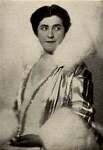 Frida
Leider (1888–1975) was the foremost
dramatic soprano of the 1920s and 1930s
and was unsurpassed in roles like Brünnhilde
and Isolde, which she sang at Bayreuth
between 1928 and 1938. During this period
she was also a celebrated guest at Covent
Garden as, e.g. Leonore in Fidelio,
but her home stage from 1924 was the
Berlin State Opera, which she had to
leave in 1940, since she was married
to a Jew.
Frida
Leider (1888–1975) was the foremost
dramatic soprano of the 1920s and 1930s
and was unsurpassed in roles like Brünnhilde
and Isolde, which she sang at Bayreuth
between 1928 and 1938. During this period
she was also a celebrated guest at Covent
Garden as, e.g. Leonore in Fidelio,
but her home stage from 1924 was the
Berlin State Opera, which she had to
leave in 1940, since she was married
to a Jew.
Recommended listening:
She left a large and
valuable recorded legacy and possibly
her best electric recordings are to
be found on Vols. 1 [PR89004] and 2
[PR89098] in Preiser’s Leider series
Link.
Lotte Lehmann
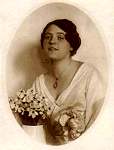 Lotte
Lehmann (1888–1976). If Leider
was the dramatic soprano of her age,
Lehmann was the leading lyric-dramatic
singer in operas by Richard Strauss,
but she was also a great Sieglinde in
Die Walküre and also an excellent
Lieder singer. At the Salzburg Festival
she was Leonore in Fidelio for ten years
and Elisabeth Schwarzkopf learnt much
from her about unforgettably moulding
a phrase.
Lotte
Lehmann (1888–1976). If Leider
was the dramatic soprano of her age,
Lehmann was the leading lyric-dramatic
singer in operas by Richard Strauss,
but she was also a great Sieglinde in
Die Walküre and also an excellent
Lieder singer. At the Salzburg Festival
she was Leonore in Fidelio for ten years
and Elisabeth Schwarzkopf learnt much
from her about unforgettably moulding
a phrase.
Recommended listening:
The abridged Rosenkavalier,
conducted by Robert Heger [review],
and the first act of Die Walküre,
with Melchior as Siegmund and Bruno
Walter conducting [review],
are desert island recordings. Her best
separate recordings can be found on
a Preiser disc and Naxos are in the
process of releasing her Lieder records.
Elisabeth Schumann
 Elisabeth
Schumann (1888–1952) was the
third of the great German sopranos of
this period and she was the most lyrical
of them, first and foremost an excellent
Mozart singer and few sopranos ever
have been such a lovely Pamina or Susanna.
Every recording of hers oozes with charm.
With advanced years she devoted more
and more time to Lieder and her Schubert
readings are regarded as models.
Elisabeth
Schumann (1888–1952) was the
third of the great German sopranos of
this period and she was the most lyrical
of them, first and foremost an excellent
Mozart singer and few sopranos ever
have been such a lovely Pamina or Susanna.
Every recording of hers oozes with charm.
With advanced years she devoted more
and more time to Lieder and her Schubert
readings are regarded as models.
Recommended listening:
Naxos have released
a full CD with Schubert songs 8.110731
[details]
and have also started a survey of all
her Victor recordings, so far only the
earliest electric ones but the rest
will hopefully appear soon. She is also
a delightful Sophie on the Rosenkavalier
set with Lehmann. On Preiser some of
her best recordings from the late 1920s
are collected – the period when she
possibly was at her very best.
Rosa Ponselle
 Rosa
Ponselle (1897–1981) was American
by birth and started her career as a
vaudeville singer. An impresario discovered
her talent and took her to the Metropolitan
Opera where she made her debut at the
age of 21 in La forza del destino against
Enrico Caruso, no less. She was at her
best in Verdi’s lirico-spinto parts,
e.g. Elisabeth in Don Carlo,
but she also sang Norma and also appeared
as Mathilde In William Tell.
She retired in 1936, not yet 40.
Rosa
Ponselle (1897–1981) was American
by birth and started her career as a
vaudeville singer. An impresario discovered
her talent and took her to the Metropolitan
Opera where she made her debut at the
age of 21 in La forza del destino against
Enrico Caruso, no less. She was at her
best in Verdi’s lirico-spinto parts,
e.g. Elisabeth in Don Carlo,
but she also sang Norma and also appeared
as Mathilde In William Tell.
She retired in 1936, not yet 40.
Recommended listening:
Many of her best Verdi
recordings, some of them acoustic, are
collected on a Naxos disc 8.110728 [details]and
this company have also recently started
a chronological release of her recordings.
Kirsten Flagstad
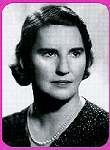 Kirsten
Flagstad (1895–1962) was Norwegian
and made her debut as early as 1913.
After that she sang mostly operetta
for many years and not until 1934 when
she sang in Bayreuth, she had a real
break-through, but then the operatic
world lay before her feet and the Metropolitan,
the Vienna State Opera, San Francisco
and London quickly launched her in the
heavy dramatic roles as the natural
heir to Frida Leider. Her relatively
late start in the heroic repertoire
granted her a long career; she continued
singing until 1955 and even later, in
1958, Georg Solti enticed her to a comeback
when she sang Fricka on his epoch-making
Das Rheingold.
Kirsten
Flagstad (1895–1962) was Norwegian
and made her debut as early as 1913.
After that she sang mostly operetta
for many years and not until 1934 when
she sang in Bayreuth, she had a real
break-through, but then the operatic
world lay before her feet and the Metropolitan,
the Vienna State Opera, San Francisco
and London quickly launched her in the
heavy dramatic roles as the natural
heir to Frida Leider. Her relatively
late start in the heroic repertoire
granted her a long career; she continued
singing until 1955 and even later, in
1958, Georg Solti enticed her to a comeback
when she sang Fricka on his epoch-making
Das Rheingold.
Recommended listening:
Preiser have an excellent
disc with Beethoven, Weber and Wagner
recordings from the late 1930s [PR89141].
Her post-war recordings, including the
legendary Tristan und Isolde
under Furtwängler, are also classics
but they belong, strictly speaking,
to the next period. On Naxos there is
a disc with duets with Melchior [8.110723]and
live broadcasts from the Met of Tristan
and Siegfried – both also with Melchior.
Claudia Muzio
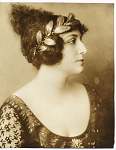 Claudia
Muzio (1889–1936) made her debut
in Arezzo in 1910 and sang for some
seasons in Turin and also at Covent
Garden but it was in the US and also
South America that she has her great
successes. She sang all the great Verdi
and Puccini roles and also some verismo.
Claudia
Muzio (1889–1936) made her debut
in Arezzo in 1910 and sang for some
seasons in Turin and also at Covent
Garden but it was in the US and also
South America that she has her great
successes. She sang all the great Verdi
and Puccini roles and also some verismo.
Recommended listening:
Many of her best recordings
were pre-electric but she made a fabulous
series for Columbia 1934 – 35, which
have been issued on the now defunct
Romophone label. They will hopefully
appear again soon on Naxos, who are
reissuing most of that catalogue.
Maria Caniglia
 Maria
Caniglia (1905–1979) was probably
the most popular Italian soprano during
the 1930s and 40s, moving from lyrical
roles to the great dramatic parts. She
was an engaging actor and her voice
was magnificent but not always so subtle.
She was in great demand all over the
world but most of all she was the star
of La Scala in Milan.
Maria
Caniglia (1905–1979) was probably
the most popular Italian soprano during
the 1930s and 40s, moving from lyrical
roles to the great dramatic parts. She
was an engaging actor and her voice
was magnificent but not always so subtle.
She was in great demand all over the
world but most of all she was the star
of La Scala in Milan.
Recommended listening:
She recorded extensively
from 1930 and her voice has also been
preserved in a number of complete opera
recordings, four of them with Beniamino
Gigli: Andrea
Chenier, Tosca,
Un
ballo in maschera and Aida.
Maybe even better is a wartime Cetra
recording of La forza del destino. All
of these are now on Naxos. On Preiser
there is also a disc of separate arias,
including her earliest offerings from
1930 [details].
There is even some Wagner here.
Further sopranos
to explore:
Meta Seinemeyer, Tiana
Lemnitz, Elisabeth Rethberg, Dusolina
Giannini, Toti Dal Monte, Lina Pagliughi,
Lily Pons, Ninon Vallin, Maggie Teyte,
Marjorie Lawrence, Eva Turner
Contraltos/Mezzo-sopranos
Conchita Supervia
 Conchita
Supervia (1895–1936). This Spanish
contralto started her training at the
age of twelve and she was sixteen she
was Octavian at the Italian premiere
of Der Rosenkavalier. After that
she sang on the great Italian houses,
from 1924 at La Scala. In 1925 she took
part in the revival of Rossini’s operas,
since she was the first singer since
the 19th century who could
cope with the tremendously difficult
coloratura roles, intended for contraltos:
Il barbiere di Siviglia, La Cenerentola
and L’Italiana in Algeri.
She died in childbirth when she was
41.
Conchita
Supervia (1895–1936). This Spanish
contralto started her training at the
age of twelve and she was sixteen she
was Octavian at the Italian premiere
of Der Rosenkavalier. After that
she sang on the great Italian houses,
from 1924 at La Scala. In 1925 she took
part in the revival of Rossini’s operas,
since she was the first singer since
the 19th century who could
cope with the tremendously difficult
coloratura roles, intended for contraltos:
Il barbiere di Siviglia, La Cenerentola
and L’Italiana in Algeri.
She died in childbirth when she was
41.
Recommended listening:
On Preiser, this goldmine
when it comes to historical singers,
there is a disc with recordings from
1927-28: Mozart, Rossini, Carmen (one
of her great parts) and also two duets
from Der Rosenkavalier [details].
Kerstin Thorborg
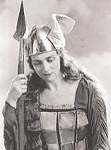 Kerstin
Thorborg (1896–1970) This Swedish
mezzo-soprano started her career at
the Stockholm Opera in 1923, where she
for seven years sang many of the great
roles, not least Wagner. From 1930 her
career was international. From 1935
she was engaged at the Vienna State
Opera, which she left in 1938 as a protest
against the Nazis. After that she sang
every year at the Met, where she was
soubriqueted "Caruso of Contraltos".
Kerstin
Thorborg (1896–1970) This Swedish
mezzo-soprano started her career at
the Stockholm Opera in 1923, where she
for seven years sang many of the great
roles, not least Wagner. From 1930 her
career was international. From 1935
she was engaged at the Vienna State
Opera, which she left in 1938 as a protest
against the Nazis. After that she sang
every year at the Met, where she was
soubriqueted "Caruso of Contraltos".
Recommended listening:
A legendary recording
is Mahler’s Das Lied von der Erde,
recorded live in Vienna in 1936 under
Bruno Walter [review].
On Preiser there is a disc with arias,
dominated by Wagner, but also some songs
by Schubert, Brahms and Wolf [details].
There is also on Guild that live Lohengrin
from the Met 1943 with Melchior,
where she sings Ortrud [review].
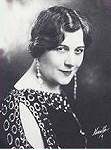 Sigrid
Onegin (1889–1943) was German
but married one of her teachers, the
Russian composer Eugen Onegin. She sang
at various German houses but also came
to the Met, where she made her debut
as Amneris in Aida. Among her
signature parts were Orpheus, Dorabella
in Cosi fan tutte, Lady Macbeth
and Dalila in Samson et Dalila. She
was also a noted interpreter of Strauss
and Wagner.
Sigrid
Onegin (1889–1943) was German
but married one of her teachers, the
Russian composer Eugen Onegin. She sang
at various German houses but also came
to the Met, where she made her debut
as Amneris in Aida. Among her
signature parts were Orpheus, Dorabella
in Cosi fan tutte, Lady Macbeth
and Dalila in Samson et Dalila. She
was also a noted interpreter of Strauss
and Wagner.
Recommended listening:
Preiser have issued
two CDs, one with songs, the other with
arias, including Orpheus, Carmen and
Dalilah.Vol
1, Vol
2
Marian Anderson
 Marian
Anderson (1897–1993) owned one
of the warmest contralto voices of her
generation, and she became enormously
popular, even among people who normally
didn’t bother about "classical
music". She worked mainly as a
concert singer, performing negro spirituals,
which was her true metier, but she was
also a noted singer of Lieder. Her recording
of Schubert’s Ave Maria is one
of the classics of the gramophone. When
touring Europe in the 1930s she got
interested in Sibelius’s songs, which
she also recorded. The composer even
dedicated his Solitude to her.
In 1955 she made her debut at the Metropolitan
Opera as the first coloured singer ever,
singing Ulrica in Un ballo in maschera.
By then, though, she was 58 and past
her best.
Marian
Anderson (1897–1993) owned one
of the warmest contralto voices of her
generation, and she became enormously
popular, even among people who normally
didn’t bother about "classical
music". She worked mainly as a
concert singer, performing negro spirituals,
which was her true metier, but she was
also a noted singer of Lieder. Her recording
of Schubert’s Ave Maria is one
of the classics of the gramophone. When
touring Europe in the 1930s she got
interested in Sibelius’s songs, which
she also recorded. The composer even
dedicated his Solitude to her.
In 1955 she made her debut at the Metropolitan
Opera as the first coloured singer ever,
singing Ulrica in Un ballo in maschera.
By then, though, she was 58 and past
her best.
Recommended listening:
In the Naxos Nostalgia
series there are two discs devoted to
Marian Anderson, both with a mix of
spirituals, Lieder, sacred songs and
opera arias. Volume 1 includes Ave
Maria. Review
Review
Preiser also have an Anderson disc with
no opera. details
There is some overlapping with the Naxos
discs but all three are well worth owning.
Ebe Stignani
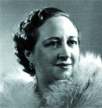 Ebe
Stignani (1903–1974) was the
leading dramatic contralto during almost
thirty years, from her La Scala debut
in 1926 until she retired in 1958. She
was one of the all time greats with
a voice type that today seems practically
extinct. Amneris in Aida, Azucena
in Il trovatore, Eboli in Don
Carlo and Adalgisa in
Norma were some of her more than
one hundred parts.
Ebe
Stignani (1903–1974) was the
leading dramatic contralto during almost
thirty years, from her La Scala debut
in 1926 until she retired in 1958. She
was one of the all time greats with
a voice type that today seems practically
extinct. Amneris in Aida, Azucena
in Il trovatore, Eboli in Don
Carlo and Adalgisa in
Norma were some of her more than
one hundred parts.
Recommended listening:
She can be heard on
a number of complete opera sets, some
of these live recordings. An early (1931)
La Gioconda is on Naxos [review],
as is the even more recommendable La
forza del destino (1941) [review].
Aida (1946) with Gigli and Caniglia
is outside the scope of this period
but still worth hearing [review],
as is the 1954 EMI recording of Norma
with Callas, also available on Naxos
[review].
The ever-reliable Preiser label offers
a fine cross-section of arias from some
of her central roles recorded 1936–1941.[details]
Further mezzo-sopranos/contraltos
to explore
Karin Branzell, Margarete
Klose
Tenors
Beniamino Gigli
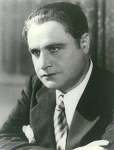 Beniamino
Gigli, born 1890, died 1957, charismatic
Italian who after a career in Italy
came to the MET as the natural heir
to Caruso for more than ten years. In
the beginning of the 1930s he returned
to Europe and had a long career well
into his 60s. He had a brilliant lyric
dramatic voice and also charmed his
audiences with his meltingly beautiful
half-voice. His singing was sometimes
marred by too much sobs and gulps but
he always made amends by the passion
and intensity of his delivery.
Beniamino
Gigli, born 1890, died 1957, charismatic
Italian who after a career in Italy
came to the MET as the natural heir
to Caruso for more than ten years. In
the beginning of the 1930s he returned
to Europe and had a long career well
into his 60s. He had a brilliant lyric
dramatic voice and also charmed his
audiences with his meltingly beautiful
half-voice. His singing was sometimes
marred by too much sobs and gulps but
he always made amends by the passion
and intensity of his delivery.
Recommended listening:
All his "singles"
are being issued chronologically by
Naxos. Start with Volumes 7 [review]
and 8 [review],
recorded in the beginning of the 1930s
when he had reached the ideal balance
between mature insight and a still fresh
voice. These are his legendary recordings
of many of the standard tenor arias
and he also sings a number of Neapolitan
and other songs, which was another speciality
of his. Gigli also took part in a number
of complete recordings of standard operas,
from I Pagliacci in 1933 to Aida
in 1946. In between these he recorded
Un ballo in maschera, Cavalleria
rusticana (with the composer conducting),
La bohème, Tosca, Madama Butterfly
and Andrea Chenier. All of these
have also been reissued by Naxos and
are valuable complements to his singles
since they show his dramatic talent
in a wider scope. Some of them were
recorded rather late in his career but
are still valuable documents.[details
of Naxos recordings]
Tito Schipa
 Tito
Schipa (1887–1965) was the aristocrat
among his contemporaries and indeed
in any time. His was a smallish, lyrical
voice with limited range (no breast-beating
high Cs) and not intrinsically beautiful
as Gigli’s certainly was, but it was
employed with the utmost musicality
and taste and no one could inflect the
musical line with so many exquisite
nuances. His operatic repertoire was
not large; he only sang roles that were
suited to his resources and this also
allowed him to continue singing well
into his 60s. He didn’t leave La Scala
until 1950.
Tito
Schipa (1887–1965) was the aristocrat
among his contemporaries and indeed
in any time. His was a smallish, lyrical
voice with limited range (no breast-beating
high Cs) and not intrinsically beautiful
as Gigli’s certainly was, but it was
employed with the utmost musicality
and taste and no one could inflect the
musical line with so many exquisite
nuances. His operatic repertoire was
not large; he only sang roles that were
suited to his resources and this also
allowed him to continue singing well
into his 60s. He didn’t leave La Scala
until 1950.
Recommended listening:
Naxos are in the process
of releasing his American recordings,
where the first volume covers 1922–24
but in the next volume we are already
in the electric era and his voice is
reproduced with amazing fidelity [details].
As with Gigli this is a mix of opera
arias and popular songs. Other collections
can be found on Preiser and Nimbus.
His only complete opera recording, Don
Pasquale (1932) has been available
on CD (Frequenz).
Giovanni Martinelli
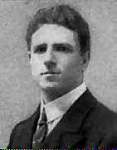 Giovanni
Martinelli (1885–1969) made his
debut in Milan in 1910 but arrived at
the Met as early as 1913 and remained
there as a leading Italian tenor until
1946. His was a powerful dramatic tenor
with gleaming penetrating high notes
and very little of the honeyed beauty
of e.g. Gigli and Schipa. He was an
expressive actor and excelled in roles
like Radames in Aida and the
title role of Otello. He even
sang Tristan against Kirsten Flagstad’s
Isolde in Chicago in 1939. By many he
is regarded as the best Verdi tenor
during the 1920s and 1930s.
Giovanni
Martinelli (1885–1969) made his
debut in Milan in 1910 but arrived at
the Met as early as 1913 and remained
there as a leading Italian tenor until
1946. His was a powerful dramatic tenor
with gleaming penetrating high notes
and very little of the honeyed beauty
of e.g. Gigli and Schipa. He was an
expressive actor and excelled in roles
like Radames in Aida and the
title role of Otello. He even
sang Tristan against Kirsten Flagstad’s
Isolde in Chicago in 1939. By many he
is regarded as the best Verdi tenor
during the 1920s and 1930s.
Recommended listening:
Absolutely indispensable
is the live recording of Otello
from the Met, also featuring Tibbett’s
galvanising Iago and Elisabeth Rethberg’s
vulnerable Desdemona. [review]On
Preiser there is a CD with recordings
from 1926–27 [details],
while Pearl have a two CD set covering
1925–29. A Nimbus disc features both
acoustic and electrical recordings.
All of these are worth exploring.
Richard Tauber
 Richard
Tauber (1891–1948) Austrian of birth
he had his training in Freiburg and
made his debut as Tamino in Die Zauberflöte
in 1913 and was regarded as the foremost
Mozart singer in Germany and Austria.
Like Schipa he didn’t have a very large
voice and he rarely hit a high C but
his mellifluous delivery and his ability
to caress phrases unforgettably made
him immensely popular. Some critics
thought him too sentimental, something
that became more pronounced when he
in the late 1920s became associated
with Franz Lehár and was the
operetta star of his time. He also
sang Lieder and popular songs and even
composed. At the end of his career he
returned to Mozart and turned out to
be just as stylish as he was in his
youth.
Richard
Tauber (1891–1948) Austrian of birth
he had his training in Freiburg and
made his debut as Tamino in Die Zauberflöte
in 1913 and was regarded as the foremost
Mozart singer in Germany and Austria.
Like Schipa he didn’t have a very large
voice and he rarely hit a high C but
his mellifluous delivery and his ability
to caress phrases unforgettably made
him immensely popular. Some critics
thought him too sentimental, something
that became more pronounced when he
in the late 1920s became associated
with Franz Lehár and was the
operetta star of his time. He also
sang Lieder and popular songs and even
composed. At the end of his career he
returned to Mozart and turned out to
be just as stylish as he was in his
youth.
Recommended listening:
On Naxos there are
a couple of volumes with Tauber’s operatic
recordings [review]
and in their Nostalgia series he can
be heard in a lighter vein [review]
[review].
In the field of operetta it is especially
valuable to have some recordings of
the parts in Lehár operettas
that he created, conducted by the composer.
Lauritz Melchior
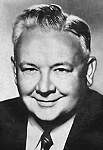 Lauritz
Melchior (1890–1973) Born in Denmark
he had his training in Copenhagen and
after his debut in 1913 he sang the
first five years as a baritone but after
further studies moved up to the tenor
department where he soon became the
leading dramatic tenor, specialising
on Wagner. No one has actually equalled
his volume, his roundness of tone, his
dramatic delivery and his stamina. 1926–1950
he sang almost 500 performances at the
MET, more than one hundred as Tristan,
regarded as the Everest of tenor roles.
He had a jovial personality and made
films and sang operetta and musical
after he had left the stage.
Lauritz
Melchior (1890–1973) Born in Denmark
he had his training in Copenhagen and
after his debut in 1913 he sang the
first five years as a baritone but after
further studies moved up to the tenor
department where he soon became the
leading dramatic tenor, specialising
on Wagner. No one has actually equalled
his volume, his roundness of tone, his
dramatic delivery and his stamina. 1926–1950
he sang almost 500 performances at the
MET, more than one hundred as Tristan,
regarded as the Everest of tenor roles.
He had a jovial personality and made
films and sang operetta and musical
after he had left the stage.
Recommended listening:
His recordings of opera
arias and excerpts, mostly Wagner but
also e.g. Otello, from the early electric
period are a must. EMI hopefully still
have a Reference CD in stock. Nimbus,
Pearl and Preiser also have Melchior
collections. Otherwise Danacord have
issued an extensive series of reissues.
On Naxos there is a Tristan und Isolde
from Met 1936 with Flagstad [review],
a Lohengrin from the same source
(1942) [review],
a Götterdämmerung (1936)[review]
and also the studio made recordings
of Die Walküre (acts I and
II) from the 1930s with Bruno Walter
[review].
Georges Thill
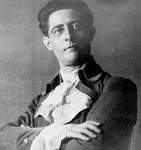 Georges
Thill (1897-1984) was undoubtedly
the greatest French tenor of the 20th
century. He studied with the Italian
bel canto tenor Fernando de Lucia and
under his guidance developed a voice
that was a mixture of the lyric and
the dramatic. He could excel in ravishing
mezza voce singing but also had a powerful
forte with a ringing high C at his disposal
and his emission of tone was absolutely
even from top to bottom. Naturally he
was at his best in the central French
repertoire where his timbre and enunciation
seems perfect.
Georges
Thill (1897-1984) was undoubtedly
the greatest French tenor of the 20th
century. He studied with the Italian
bel canto tenor Fernando de Lucia and
under his guidance developed a voice
that was a mixture of the lyric and
the dramatic. He could excel in ravishing
mezza voce singing but also had a powerful
forte with a ringing high C at his disposal
and his emission of tone was absolutely
even from top to bottom. Naturally he
was at his best in the central French
repertoire where his timbre and enunciation
seems perfect.
Recommended listening:
With a recorded legacy
of more than 150 titles and a couple
of complete operas there is a lot to
choose from but the obvious starting
point is definitely the 1931 Werther,
still regarded as the touchstone recording,
where he is partnered by the delectable
soprano Ninon Vallin.[review]
This set has been reissued by Naxos
and as a "filler" we also
get six further Massenet arias with
Thill.
Jussi Björling
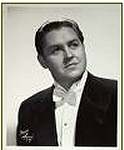 Jussi
Björling (1911–1960) Born in
Stora Tuna in central Sweden he had
an early career as a boy soprano together
with his father and two brothers. He
came to the Stockholm opera still only
19 and during the next eight years he
sang more than 50 roles. In 1938 he
came to the Met which became the home
stage for the rest of his life. His
was a true tenor, produced with a supreme
lightness but with a brilliant ringing
top and unsurpassed beauty all through
the range. His plangent tone still goes
directly to the heart in most of the
standard tenor arias. Jussi was considerably
younger than the other singers represented
here and actually more belongs to the
following periods but his recorded legacy
from the first decade is of a quality
to make it compulsory listening for
anyone interested in good singing.
Jussi
Björling (1911–1960) Born in
Stora Tuna in central Sweden he had
an early career as a boy soprano together
with his father and two brothers. He
came to the Stockholm opera still only
19 and during the next eight years he
sang more than 50 roles. In 1938 he
came to the Met which became the home
stage for the rest of his life. His
was a true tenor, produced with a supreme
lightness but with a brilliant ringing
top and unsurpassed beauty all through
the range. His plangent tone still goes
directly to the heart in most of the
standard tenor arias. Jussi was considerably
younger than the other singers represented
here and actually more belongs to the
following periods but his recorded legacy
from the first decade is of a quality
to make it compulsory listening for
anyone interested in good singing.
Recommended listening:
So far Naxos have issued
six volumes with Jussi Björling,
covering both his Swedish recordings
and the ones in the original languages.
[details]Here
we can also hear his foray into popular
music where he under pseudonym recorded
quite a few dance band sides. His complete
opera recordings from the early 50s
are of course not to be missed, Manon
Lescaut (on Naxos) maybe the pick,
even though they belong to the LP era
[review].
Further tenors
to explore
Franz Völker,
Joseph Schmidt, Dino Borgioli, Giacomo
Lauri-Volpi, Aureliano Pertile, Heddle
Nash, Richard Crooks, Sergei Lemeshev,
Helge Rosvaenge
Basses 1925-WW2
Alexander Kipnis
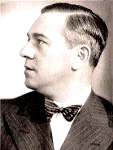 Alexander
Kipnis (1891-1978) Versatility in
range – from the cavernous depths to
high Ds without discomfort – and in
repertoire – from Wagner to Brahms,
Wolf and beyond – marked out the supreme
artistry of Alexander Kipnis. A superb
lieder recitalist and a powerful theatrical
stage presence Kipnis was equally successful
in his native Russian songs as in the
central Germanic repertoire; somewhat
less so in his more limited forays into
the Italian school.
Alexander
Kipnis (1891-1978) Versatility in
range – from the cavernous depths to
high Ds without discomfort – and in
repertoire – from Wagner to Brahms,
Wolf and beyond – marked out the supreme
artistry of Alexander Kipnis. A superb
lieder recitalist and a powerful theatrical
stage presence Kipnis was equally successful
in his native Russian songs as in the
central Germanic repertoire; somewhat
less so in his more limited forays into
the Italian school.
Recommended listening
Some Wagner (Walküre)
can be found on Naxos [review]
and Archipel, and plenty more on Pearl,
his Boris is on Walhall; his Fidelio
on Naxos. Upper to full price houses
the lieder - for now – though some is
available on Vocal Archives.
Ezio Pinza
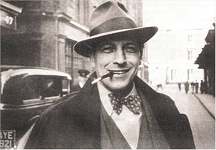 Ezio
Pinza (1892-1957) An almost exact
contemporary of Kipnis, Ezio Pinza was
a different kind of animal – a basso
cantante. His later popular career may
have diminished him in the eyes of specialists
but history will denote him as one of
the rarest of his kind, a singer with
exquisite control, perfectly graded
pianissimi and tremendous taste. His
earliest recordings in the 1920s show
his voice in freshest and most vibrant
estate. His decline was post-war.
Ezio
Pinza (1892-1957) An almost exact
contemporary of Kipnis, Ezio Pinza was
a different kind of animal – a basso
cantante. His later popular career may
have diminished him in the eyes of specialists
but history will denote him as one of
the rarest of his kind, a singer with
exquisite control, perfectly graded
pianissimi and tremendous taste. His
earliest recordings in the 1920s show
his voice in freshest and most vibrant
estate. His decline was post-war.
Recommended listening
His Del Forza del Destino
with Bruno Walter is on Naxos and an
incandescent place to start. If you
can run to it I suggest Guild’s Met
restorations of Samson and Don Giovanni
[review].
There are cheap and serviceable selections
on Myto and Walhall.
Feodor Chaliapin
 Feodor
Chaliapin (1873-1938) Chaliapin’s
recording career began well into the
acoustic era of course but he made discs
until 1936, two years before his death.
He was the ultimate singer-actor, a
theatrical presence of magnetic allure,
and one who was perfectly prepared to
jettison Italian ideas of legato in
favour of dramatic realism and vocal
impersonation. Despite that the voice
is invariably under absolute control,
and it’s frequently of considerable
intrinsic beauty, despite the reputation
for histrionic projection.
Feodor
Chaliapin (1873-1938) Chaliapin’s
recording career began well into the
acoustic era of course but he made discs
until 1936, two years before his death.
He was the ultimate singer-actor, a
theatrical presence of magnetic allure,
and one who was perfectly prepared to
jettison Italian ideas of legato in
favour of dramatic realism and vocal
impersonation. Despite that the voice
is invariably under absolute control,
and it’s frequently of considerable
intrinsic beauty, despite the reputation
for histrionic projection.
Recommended listening
Naxos has a fine Portrait
disc [review],
and whilst Preiser has a structured
approach [details]
Minerva and Phonographe are more snapshots,
though the latter includes the live
Covent Garden discs; the run of acoustics
are on Pearl and Arbiter.
Marcel Journet
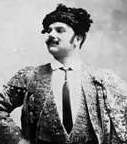 Marcel
Journet (1867-1933) Journet creeps
in to the post-1925 list but only just;
he did sing until the year of his death.
The 1927 recordings he made show him
in admirable vocal estate for a man
of sixty and only reveal some wear and
reduction in range. His was an extensive
career and he had a voice to match –
wide compass, nobility, technical security
bordering on the remarkable - incredible
rapidity of movement from low to high
without break or technical impediment.
As the representative French bass he
demonstrates all that is greatest in
that school.
Marcel
Journet (1867-1933) Journet creeps
in to the post-1925 list but only just;
he did sing until the year of his death.
The 1927 recordings he made show him
in admirable vocal estate for a man
of sixty and only reveal some wear and
reduction in range. His was an extensive
career and he had a voice to match –
wide compass, nobility, technical security
bordering on the remarkable - incredible
rapidity of movement from low to high
without break or technical impediment.
As the representative French bass he
demonstrates all that is greatest in
that school.
Recommended listening
Grammophono - including
a Caruso disc with duets - and Atoll
have snippets of Journet’s art, his
indispensable Faust recording (frayed
in voice) is on Pearl – though once
digested it will be imperative to seek
out the Preisers devoted to him.
Other basses: Norman
Allin, Ivar Andresen, Wilhelm Streinz
Baritones 1925-WW2
Heinrich Schlusnus
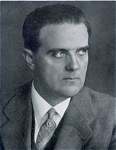 Heinrich
Schlusnus (1888-1952) Versatile
in the Italian repertoire and equally
versed in his native lieder Schlusnus
possessed one of the most beautiful
of all voices, irrespective of type.
His art was marked by sheer grace, by
fluidity through all registers, though
being a high baritone it was naturally
stronger in that part of his voice.
He shared with Kipnis sovereignty in
the opera house and on the recital platform;
he was a memorable Wagnerian.
Heinrich
Schlusnus (1888-1952) Versatile
in the Italian repertoire and equally
versed in his native lieder Schlusnus
possessed one of the most beautiful
of all voices, irrespective of type.
His art was marked by sheer grace, by
fluidity through all registers, though
being a high baritone it was naturally
stronger in that part of his voice.
He shared with Kipnis sovereignty in
the opera house and on the recital platform;
he was a memorable Wagnerian.
Recommended listening
Preiser is the premier
source of Schlusnus’s recordings [details]
but you can find La Traviata on Gala
and Gebhardt has issued some of his
Wagner.
Herbert Janssen
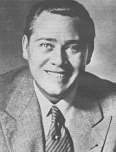 Herbert
Janssen (1892-1965) Janssen’s stature
seems to grow with the years. Later
concerns about the wear in his voice
from the 1940s cannot efface the singularity
of his operatic impersonations – principally
Wagnerian – or his success in lieder.
Tonally the voice was often beautiful
if not quite in Schlusnus’s class, but
Janssen’s penetrating combination of
acute characterisation and discreet
expression lent him a very special place
in vocal art.
Herbert
Janssen (1892-1965) Janssen’s stature
seems to grow with the years. Later
concerns about the wear in his voice
from the 1940s cannot efface the singularity
of his operatic impersonations – principally
Wagnerian – or his success in lieder.
Tonally the voice was often beautiful
if not quite in Schlusnus’s class, but
Janssen’s penetrating combination of
acute characterisation and discreet
expression lent him a very special place
in vocal art.
Recommended listening
His Tristan is invaluable
on Naxos [review]
and Archipel, and for his Strauss Elektra
you can try the Guild transfer [review].
Those imperishable lieder discs are
on Preiser and also on Pearl.
Gerhard Hüsch
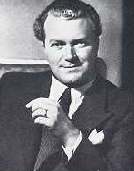
Gerhard Hüsch
(1901-1984) Hüsch was first
an operatic and then a lieder singer
and was equally distinguished in both
art forms. He shone in Mozart as he
did in Puccini and his Schumann and
Schubert cycles were profoundly impressive.
Tonally and technically he was supremely
equipped – and he didn’t overtax the
voice as Janssen did – giving his singing
lyricism and conviction. He was a lyric
baritone of the highest class.
Recommended listening
His Magic Flute with
Beecham is on Naxos [review],
invaluable lieder are on Hänssler
and Pearl, whilst Pearl have issued
the Wolf Society sides. The Nimbus transfers
of a selection of his lieder are available
in a 2 CD set.
Friedrich Schorr
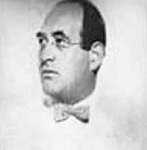 Friedrich
Schorr (1889-1953) The quartet of
German baritones is completed by the
bass-baritone Schorr. He was an exceptional
Schumann singer but the bulk of his
reputation rests on his Wagner. For
thirty years Schorr was an indispensable
Wagnerian – his magnetic theatrical
presence allied to a resonant vocal
production, a splendid legato, and command
over soft and intense singing, ensured
that he seemed to inhabit his roles
from within, the very essence of characterisation.
Friedrich
Schorr (1889-1953) The quartet of
German baritones is completed by the
bass-baritone Schorr. He was an exceptional
Schumann singer but the bulk of his
reputation rests on his Wagner. For
thirty years Schorr was an indispensable
Wagnerian – his magnetic theatrical
presence allied to a resonant vocal
production, a splendid legato, and command
over soft and intense singing, ensured
that he seemed to inhabit his roles
from within, the very essence of characterisation.
Recommended listening
Of course there is
the Ring – on Naxos – with Bodanzky
and Leinsdorf conducting fleetly [review].
Guild has his Mastersingers [review]
and with Pearl and Preiser [details]
releases you will have an exhaustive
Schorr collection.
Riccardo Stracciari
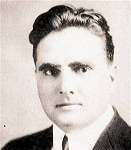 Riccardo
Stracciari (1875-1955) Leaving Ruffo
and Battistini aside as too early Stracciari
was the reigning Italian baritone of
this period. He was an energetic and
characterful singer – technically irreproachable
with regard to divisions and with a
command of legato, and a quality of
penetration at the top of his register.
His Rigoletto was exceptionally impressive
and his stage appeal indivisible from
his pronounced qualities of word painting.
Riccardo
Stracciari (1875-1955) Leaving Ruffo
and Battistini aside as too early Stracciari
was the reigning Italian baritone of
this period. He was an energetic and
characterful singer – technically irreproachable
with regard to divisions and with a
command of legato, and a quality of
penetration at the top of his register.
His Rigoletto was exceptionally impressive
and his stage appeal indivisible from
his pronounced qualities of word painting.
Recommended listening
Opera d’Oro present
a fair amount of his Italian and French
repertoire on disc. Enterprise has a
Highlights selection, and of course
Pearl and Preiser [details]take
a more comprehensive and analytical
look.
Lawrence Tibbett
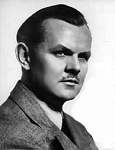 Lawrence
Tibbett (1896-1960) Tibbett’s
early decline – traceable to the early
1940s – has tended to mask his real
stature as a trenchantly declamatory
operatic baritone. He sang new music
and older with the same commitment but
excelled in the Italian repertoire.
Here, in his youth, his ringing top
notes were soon joined by a mature colour
and subtle vocal inflexion to produce
an undeniable home grown American operatic
star.
Lawrence
Tibbett (1896-1960) Tibbett’s
early decline – traceable to the early
1940s – has tended to mask his real
stature as a trenchantly declamatory
operatic baritone. He sang new music
and older with the same commitment but
excelled in the Italian repertoire.
Here, in his youth, his ringing top
notes were soon joined by a mature colour
and subtle vocal inflexion to produce
an undeniable home grown American operatic
star.
Recommended listening
Essential - the Otello
on Naxos [review]which
you can supplement with his Offenbach
on the same label [review].
For a foray into contemporary Americana
Hanson’s Merry Mount is again on Naxos
[review].
Living Era has a cheap and accessible
selection recorded 1926-35. Opera d’Oro
presents some of his French repertoire.
Other baritones
Apollo Granforte, Cesare
Formichi, Peter Dawson (bass-baritone),
Charles Panzéra
Göran Forsling
and Jonathan Woolf

